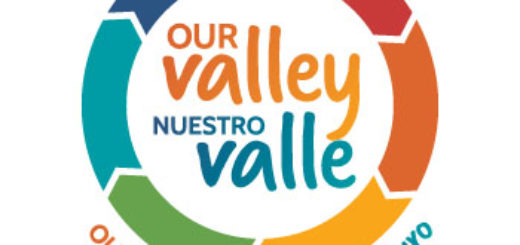Leaders support regional thinking and collaboration as critical to our future
The power of the Our Valley Our Future grass roots community building effort continues to yield impressive results in this valley.

One game changing initiatives was called “One Community,” and it revolves around the notion that it would benefit all of us to think about how we can look at challenges by thinking more regionally, collaboratively and with a sense of tapping into the energy, wisdom and creativity of as many people as possible — the younger generation, senior citizens, the disabled, our Latino neighbors, etc. The notion is that we are stronger as a valley by making it as easy as possible for people to get involved and become a part of making it better.
Like most communities, we have gotten into the habit of working in silos. The One Community vision focuses on thinking about our economy, education, natural resources, quality of life as regionally as possible.
The good news is that this thinking isn’t new. The history of North Central Washington is replete with examples of the community pulling together to do important things. That’s how we built the mid-Columbia hydroelectric projects, Mission Ridge Ski and Board Resort, the Numerica Performing Arts Center, to name just a few. Long-term thinking, collaboration and a regional perspective have allowed us to capitalize on these important opportunities.
I have enjoyed participating on a steering committee for the “One Valley” game-changer with a diverse group of leaders. To test whether our assumption that importance of regional thinking, collaboration and inclusion are critical to successful navigating the challenges over the next three decades, we convened two groups of leaders — one group comprised of experienced civic leaders and the other consisting of young leaders in our valley.
I was most interested in the perspectives of the younger leaders. They’re the ones who will have to live with the decisions that we make.
There was general agreement that we are going to see tremendous population growth in the region, that there will be greater ethnic diversity, we will see more growth in East Wenatchee and Douglas County and this valley will be popular with retirees. Both groups talked about the importance of the quality of life here.
They see housing affordability and the availability of water as significant issues needing to be addressed, as well as the need to address generational poverty and the growing economic divide between the haves and the have nots.
The participants talked about the necessity of creating a great quality of life, which will attract people to visit. There was a strong sense that a shared vision, much like the one that emerged out of the Our Valley Our Future effort, is critical to success.
They felt we will need to make changes to respond to the challenges and opportunities we will face. Collaboration was raised as a given — something that should be part of the valley moving forward.
Those attending acknowledged that change is difficult and suggested that ways be found to engage people more effectively to address concerns and make sure all residents are considered. Furthermore, it was recognized that we will need to revamp education to create the kind of access points for jobs in an increasingly digital work environment.
They were also concerned about addressing social issues like mental health, homelessness, addiction and other challenges.
I must say I was highly encouraged and heartened that both groups of leaders had very similar attitudes towards collaboration, regional thinking and inclusion. If we are going to respond to the challenges ahead of us in the next decades, we had better get ahead of the challenges and start making some thoughtful decisions.
If we want to guide our future rather than just have it happen to us haphazardly, regional thinking, collaboration and tapping into the whole community represent a mindset and a methodology for moving forward.


